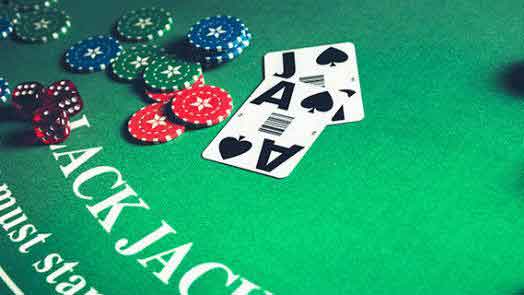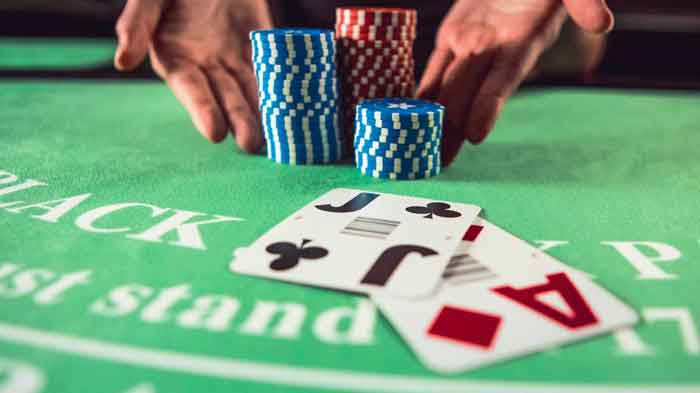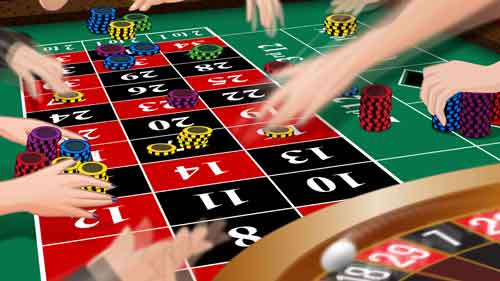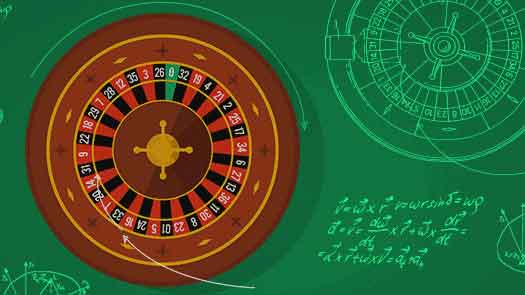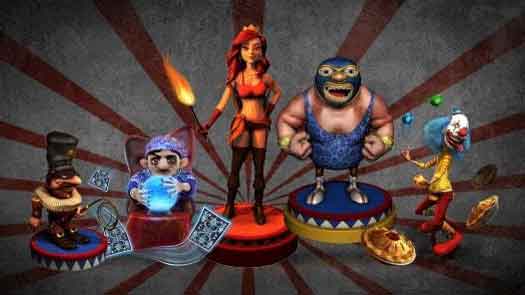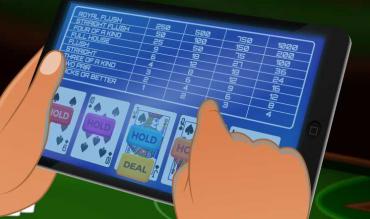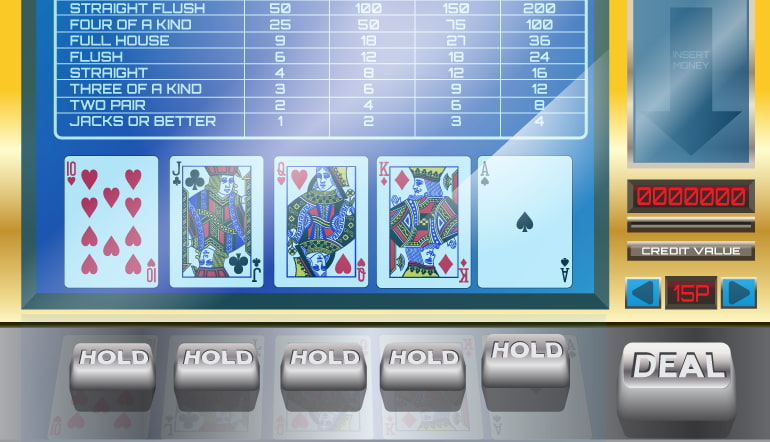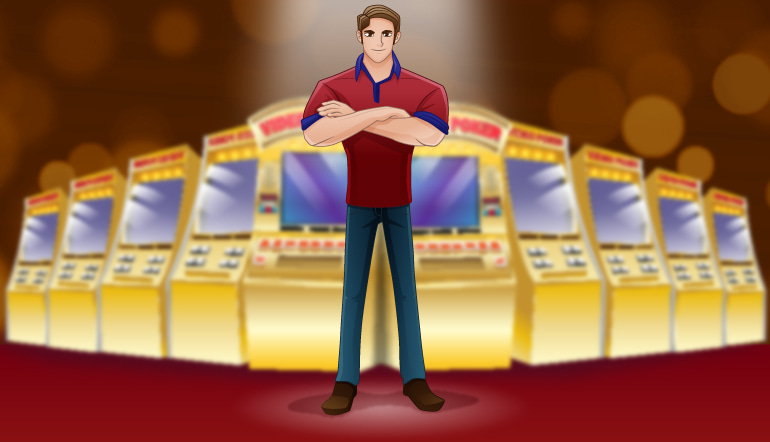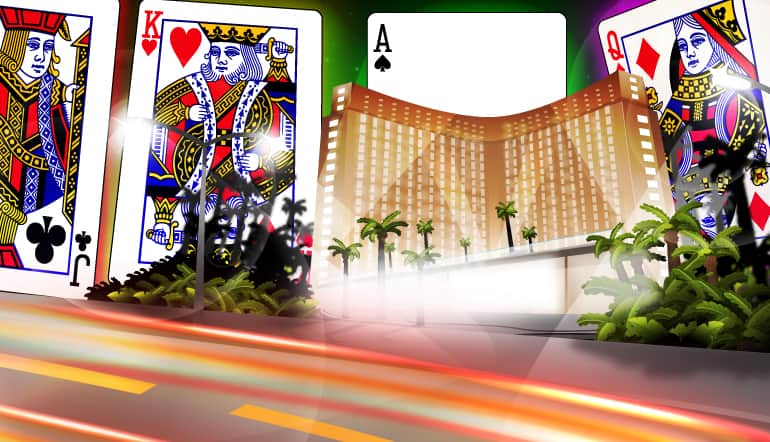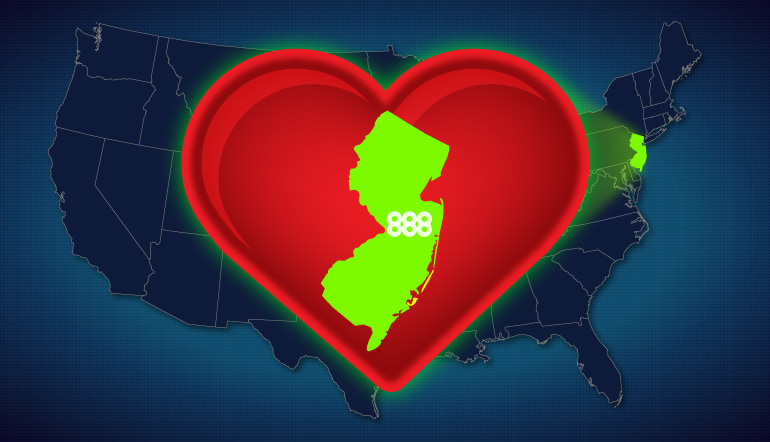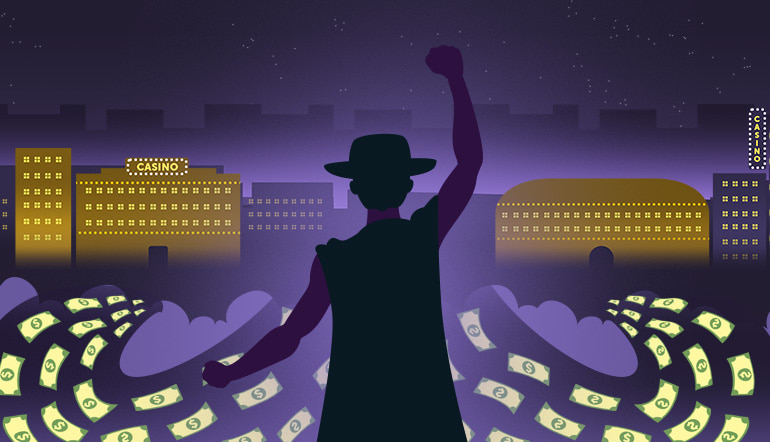Blackjack statistics are good for anyone who has ever played Blackjack, and understands the range of emotions that accompany every play. When you’re dealt a strong opening hand, you smile inwardly knowing that the Blackjack gods are on your side.
Blackjack typically pays 3:2 on player-friendly tables, but sometimes has odds of 6:5. Most of the time, it's about cobbling together a strong hand by hitting, splitting, doubling down, or possibly even taking insurance to beat the dealer.
The precise actions that you take are based on a combination of gut feel and Blackjack statistics. Too many players avoid the number-crunching, and instead rely on Lady Luck to deal them a winning hand.
Blackjack remains the ranking casino card game all over the world. Despite the runaway success of Texas Hold'em Poker, Roulette, Slots, Baccarat, and Caribbean Stud Poker, nothing compares to the real-deal appeal of Blackjack in full flight.
The runaway success of ‘Beat the Dealer’ spurred a global movement of Blackjack aficionados. Edward O. Thorp penned the award-winning book which details winning strategies for the game of 21. Unbeknownst to Blackjack players at the time, Thorp introduced them to a host of tactics and strategies which could be employed to improve Blackjack odds and winning probabilities.
Consider the popularity of this casino card game: in the 1980s, some 78% of floor space across US casinos was populated with Blackjack tables. In recent times, that number has dropped to approximately 50%, thanks to the popularization of other card and table games.
Table of Contents
- BLACKJACK STATISTICS INSIGHTS
- CALCULATING THE HOUSE EDGE WITH BLACKJACK ODDS
- BLACKJACK STRATEGY CHARTS FOR HITTING, STANDING, DOUBLING, SPLITTING, & SURRENDERING
- WHAT ARE THE PROBABILITIES OF BUSTING IN BLACKJACK IF YOU DRAW ON THE FOLLOWING HAND TOTALS?
- WHAT ABOUT THE EV OF ADVANTAGE BLACKJACK PLAYERS?
- FUN FACTS ABOUT BLACKJACK STATISTICS
BLACKJACK STATISTICS INSIGHTS
As a casino card game, Blackjack is governed by probabilities. We can easily examine the probabilities by considering a standard deck of playing cards. There are 52 cards in every deck, made up of 4 unique suits (clubs, diamonds, hearts, and spades), each comprising 13 cards.
1. These include 2, 3, 4, 5, 6, 7, 8, 9, 10, Jack, Queen, King, and Ace. Since there are 12 cards valued at 10 in each deck, the odds of being dealt a 10-value card are 12/52 (23.08%). These include Tens, Jacks, Queens, and Kings of every suit.
2. The odds of being dealt an Ace from a clean deck are 4/52 (7.7%). Calculating these odds is relatively easy, but Blackjack’s complexity only begins once the dealer’s cards have been dealt, and players’ cards have been dealt. Every deal and every action have the potential to dramatically shift the odds. We are about to conduct an in-depth exploration of Blackjack statistics to help you master the odds when betting on this card game.
3. Blackjack aficionados routinely tout the merits of basic Blackjack strategy when playing this card game. When you implement basic Blackjack strategy, you can significantly boost your winning chances from the standard RTP of 95% – 97%, upwards of 99%.
A caveat is in order: these return to player percentages are based upon long-term statistical probabilities and there is significant variance in results over the short term. Blackjack statistics ‘teach’ players what to do in certain situations.
For example, if you are holding a 12-value hand, should you hit, stand or, double? If you hit, there is a possibility that a 10-value card will be dealt and you will bust. What is the probability? Is it worth your while placing a bet or should you simply stand on 12 and hope the dealer busts?
The answers to these questions depend upon a myriad of factors, notably the dealer’s up card and the card you're holding. If other players are at your table too, their cards come into play. Remember, the objective of Blackjack is to beat the dealer's hand total without exceeding 21.
It is quite possible for a 12-value hand to beat the dealer’s hand provided the dealer keeps hitting and busts. The dealer typically draws to 16 and stands on all 17s (hard and soft 17s). If you play like the dealer and draw until you reach a hand total of 17 – 21, without splitting or doubling, the house edge becomes 5.48%. If you stand on a hard 12, you give the house a 3.91% edge over you.
CALCULATING THE HOUSE EDGE WITH BLACKJACK ODDS
Let's take a step back and briefly introduce the concept of a house edge and how it affects your Blackjack game. Since it’s you against the dealer in Blackjack, and not against other players, all decisions are determined by what you and the dealer do.
This makes it much easier for you to calculate Blackjack statistics. The strongest possible hand you can form is a natural, otherwise known as Blackjack valued at 21. Just two cards are needed to form a natural – a 10 value card and an Ace.
Of course, any hand total that beats the dealer’s hand total (≤ 21) pushes you over the winning line. The house edge in any casino game is the difference between the true odds and what the casino actually pays you. In Blackjack, the house edge is typically just 1%.
Put differently, you get to keep $99 of every $100 that you bet over the long-term in Blackjack. From a statistical perspective, Blackjack players typically win 44% – 48% of all hands that they play. Every Blackjack variant has slightly different odds designed to differentiate one game from another.
IMPORTANT TIP: If the dealer stands on a soft 17, this indicates that any combination of cards which includes an Ace valued at 1 or 11. If the dealer stands on a soft 17, the dealer cannot hit for a higher hand total. If the dealer hits on a soft 17, for example, Ace of spades, 6 of clubs, it is possible that the dealer will accumulate a greater score than 17.
This increases the house edge by 0.2%. Therefore, it is preferable to find a Blackjack table where the dealer stands on a soft 17. Another thing you want to watch out for is the number of decks in play. Ideally, you want to play Classic Blackjack with just 1 deck of cards (house edge of 0.18%) but this is rare.
Most Blackjack card games use 6 or 8 decks of cards with a greater house edge. The worst possible scenario is a Blackjack table game where the dealer hits on a soft 17 and the Blackjack odds are 6:5.
BLACKJACK STRATEGY CHARTS FOR HITTING, STANDING, DOUBLING, SPLITTING, & SURRENDERING
Multiple basic Blackjack strategy charts are available to help players ascertain when to hit, double split, or stand. The determination of these decisions is based upon thousands of plays over long periods of time.
Players don't need to worry about calculating the odds and probabilities since this has already been formulated by Blackjack experts. Below is an example of a standard Blackjack basic strategy chart which can be used to determine when to hit, draw, or stand based upon hard totals and given the following dealer upcard:
DEALER’S UPCARD
When soft hand totals are brought into the equation, the appropriate Blackjack strategy chart is as follows:
DEALER’S UPCARD
Basic Blackjack strategy requires a thorough understanding, perhaps even memorization of the rules.
Here are a couple of basic Blackjack rules and tips that you should commit to memory:
• Always hit on 8
• Always stand on soft 20
• Always stand on a hard 17+
• Always split Aces but never split 10s
• Split a pair of 9s when the dealer shows 2-9, with the exception of 7, otherwise always stand
• If the dealer’s upcard is 4, 5, 6, players stand the best chance of winning since dealers will be required to draw multiple cards
• If the dealer’s upcard is 2 or 3, players still have a good chance of winning, especially if the dealer hits 2 x 10-value cards
• If the dealer’s upcard is 7, 8, 9, the player runs the risk of losing, since the dealer can make a winning hand with just 1 more card
• If the dealer has a 10-value up card, the dealer has a 38% chance of scoring 20 or 21 with an additional card. In this case stand on 17 or more.
• If the dealer holds an Ace upcard, there is a 62% probability of the dealer winning, and a 30% chance of the dealer hitting Blackjack
WHAT ARE THE PROBABILITIES OF BUSTING IN BLACKJACK IF YOU DRAW ON THE FOLLOWING HAND TOTALS?
As you might expect, there is no chance of you busting if you're holding 11 or less and you draw an additional card. By the same token, if you have a natural, there is a 100% likelihood of busting if you draw an additional card. Many players feel that hand values between 17 – 20 are probably best left alone (stand) while hand values between 12 - 16 are probably worthy of hitting, depending upon the dealer’s upcard.
Earlier on in our Blackjack statistics guide, we indicated that there are percentages associated with drawing 10-value cards, Aces, and so forth. It is worth pointing out that those percentages apply to clean decks when no cards have been dealt yet. The moment cards are dealt from a deck, the percentages change dramatically.
If you're holding a pair of 10s and the dealer has a King upcard, the probability of another 10-value card being dealt next is calculated as follows: [Number of 10-value cards in the deck – (3 x 10-value cards already dealt)]/52. Since there are 12 x 10-value cards in a deck and 3 have already been dealt, there are 9 remaining. Therefore, the odds of the next card being a 10-value card are 9/52 = 17.31%.
WHAT ABOUT THE EV OF ADVANTAGE BLACKJACK PLAYERS?
By using optimal strategy in Blackjack rather than your gut feel, you can increase the RTP (return to player) through a series of calculated Blackjack plays. There is an optimal strategy to employ in Blackjack, as Edward O. Thorp postulated in his groundbreaking guide.
Of course, Thorp based his hypothesis on Reno/Tahoe Blackjack rules which gave the player a slight advantage of 0.09%. Thorp's work studied the impact of removing 1 card from the deck and then calculating its significance.
The advantage would shift from the player to the casino, depending on the specific card that was removed from the deck. Notable from the statistical analysis was the fact that the player edge increased by 1.69% if a pair of 5s were removed from the deck. As a result, he created the 10 Count System. This system assigned a value to specific groups of cards, thereby determining the player’s advantage.
Of course, the High-Low Count is much easier to understand than Thorp’s version and it was introduced by Harvey Dubner back in 1963. To maximize their expected value, players also need to know how to shift from basic Blackjack strategy.
This encompasses knowing when to split pairs, double or stand, based on hard totals, and soft totals, with an emphasis on the dealer’s up card. Naturally, the more hands you play, the greater the expected value. The higher the deck penetration, the greater the expected value for a card counter, all else being equal.
We can simplify these complex Blackjack statistics by assigning a statistical value for the player advantage based on the dealer’s upcard:
Each deck holds 52 cards. The greater number of decks, the more the advantage shifts in favor of the house. The best-case scenario is for a player to compete in Blackjack games with just a single deck of cards. The house edge in such a situation is just 0.04%.
If 2 decks of cards are used, the house edge is 0.42%. With 4 decks of cards in play, the house edge increases to 0.61% and by the time 6 decks are in play, the house edge is 0.67%. Since many casinos now use 8 decks of cards, they will automatically have an inherent house advantage of 0.70%, which is approximately 18 times more than when a single deck of cards is used!
FUN FACTS ABOUT BLACKJACK STATISTICS
• The dealer busts on average once every 7 hands
• A player gets blackjack on average once every 21 hands
• Blackjack strategy players bust on average every 6 hands
• Card counters have approximately a 1% edge over the casino
• Except for ties, the percentage of blackjack hands you can expect to win is 48%
• The probability of losing three consecutive hands (with the exception of ties) is approximately 14%
• Your initial blackjack hand ranks between 12-17 approximately 43% of the time
• If the dealer shows an Ace, the probability of the dealer holding a 10-value hole card is 31%
This concludes our comprehensive blackjack stats guide, hopefully it would help you to step up your game.
